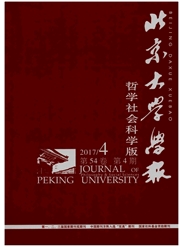

 中文摘要:
中文摘要:
生成词库理论是自然语言意义的计算与认知模型,无论是词汇表征还是语义生成机制都融入了认知视角。相比之下,生成词库更加注重认知的语言关联,通过物性结构将一些重要的百科知识引入词义描写,建立了百科知识到语言知识的接口,丰富了名词的词汇表征。这些百科知识在语义生成(组合)中起重要作用。物性结构在范畴化、隐喻、转喻和概念整合等认知语言学研究领域得到广泛应用,可以进一步揭示百科知识的语言关联,同时说明生成词库与认知语言学有相通之处。百科知识的语言关联在不同语言中有普遍性,也有相对性,反映了人类语言和认知的共性与差异。
 英文摘要:
英文摘要:
The research focus in Generative Lexicon Theory (GLT) is on the computational and cognitive modeling of natural language meaning. Both its lexical representation and semantic generative mechanisms are integrated into the cognitive perspective. By contrast, generative lexicon (GL) pays more attention to the linguistic relevance of cognition. The description of word meaning in GL encodes some important encyclopedic knowledge associated with a lexical item through qualia structure, which is the interface of encyclopedic knowledge and linguistic knowledge and enriches the lexieal representation of nouns. Such knowledge plays a significant role in semantic composition. Qualia structure is widely applied in the domains of Cognitive linguistic study, such as categorization, metaphor, metonymy and conceptual blending, which further reveals the linguistic relevance to encyclopedic knowledge, and shows the similarity between GLT and cognitive linguistics. The linguistic relevance to encyclopedic knowledge in various languages is both universal and relative, Which reflects the similarity and dissimilarity between human language and cognition.
 同期刊论文项目
同期刊论文项目
 同项目期刊论文
同项目期刊论文
 期刊信息
期刊信息
